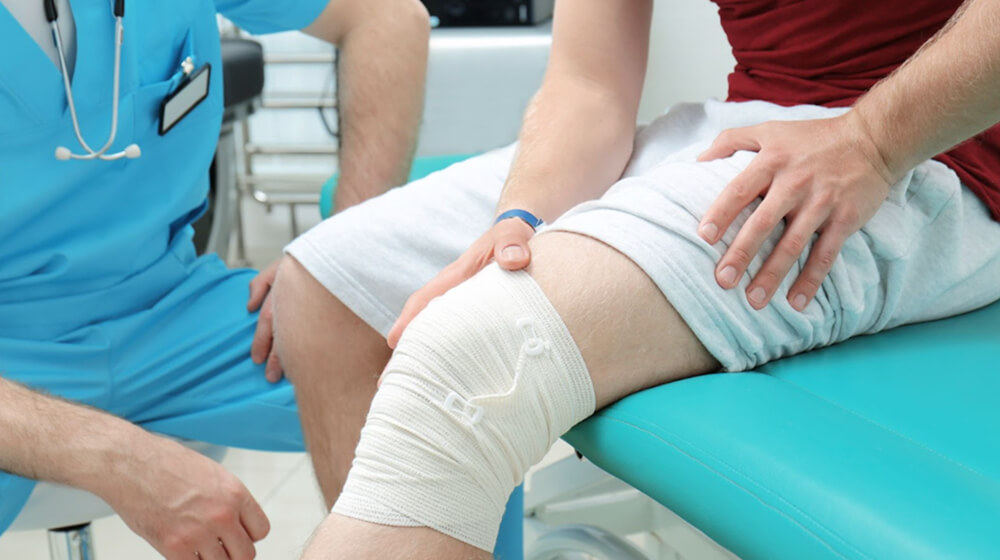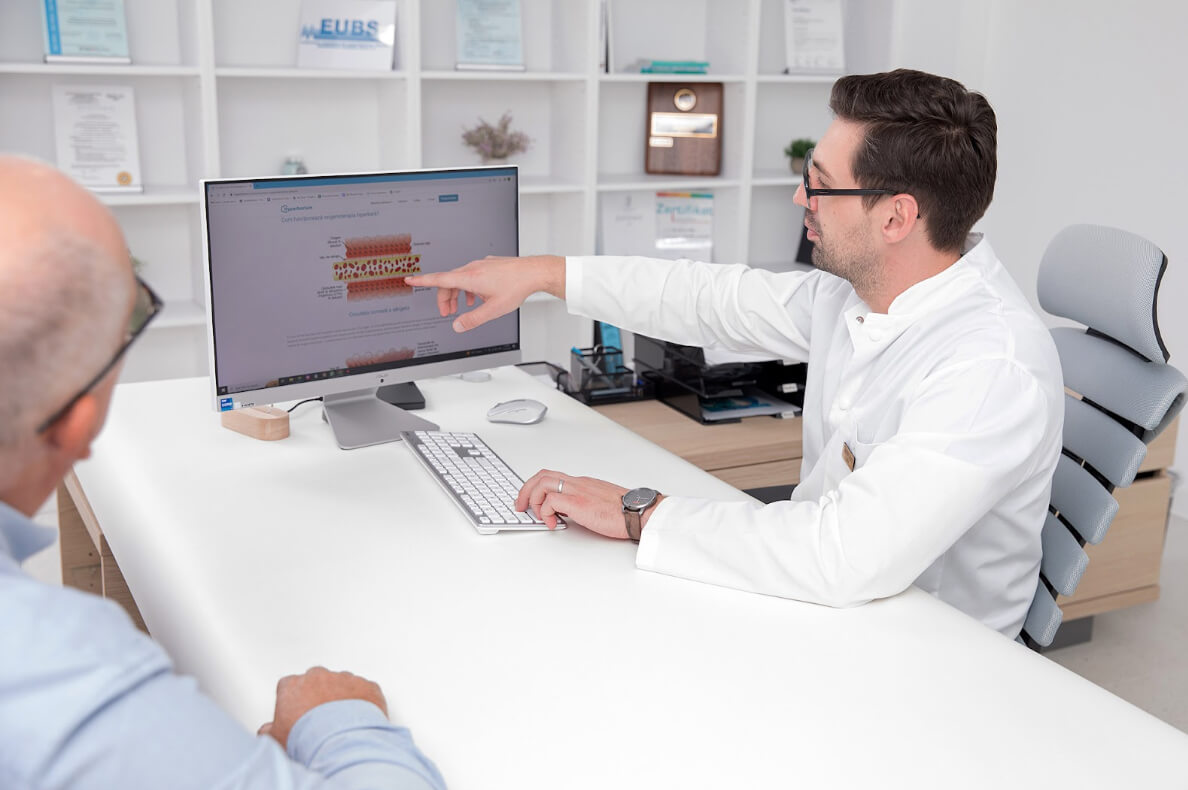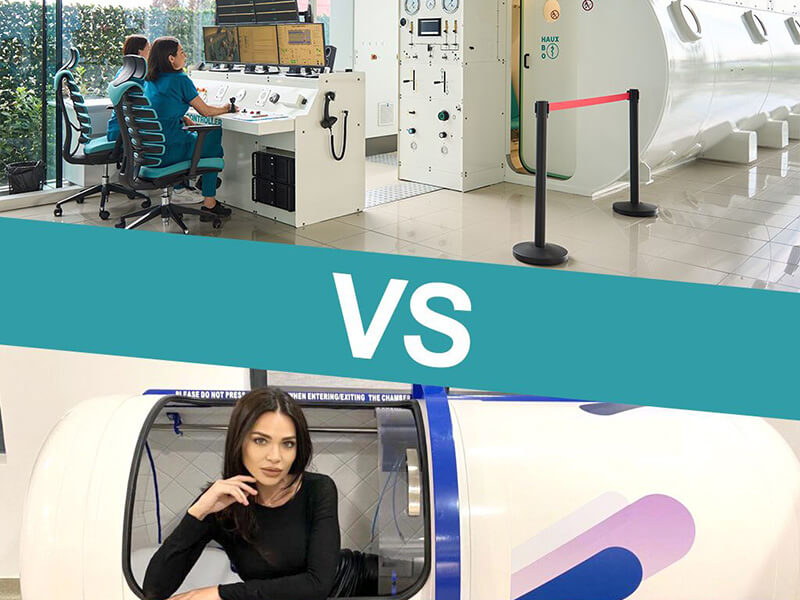
Article reviewed by: Dr. Sturz Ciprian, Dr. Tîlvescu Cătălin and Dr. Alina Vasile
Article updated on: 21-04-2025
Exercises and recommendations for recovery after orthopedic surgery
- Why recovery is as important as surgery
- The importance of personalizing the recovery process
- Activating the natural healing process with the help of oxygen
- Exercises that make the difference in rehabilitation
- Prevention matters: nutrition, sleep, and positive thinking
- Oxygen therapy, your discreet ally in healing
- Healing is not an accident, but a strategy
After orthopedic surgery, the real challenge is not just eliminating pain, but regaining confidence in your own body. Whether we're talking about a hip replacement, knee arthroscopy, or ligament reconstruction, the recovery period is essential for long-term health.
Why recovery is as important as surgery
Statistical data from Romania shows that over 35,000 major orthopedic interventions are performed annually, according to the Romanian Society of Orthopedics and Traumatology. Unfortunately, many patients underestimate the post-operative period, which leads to incomplete recoveries, joint stiffness, chronic pain, or even the need for a new intervention.
In reality, orthopedic surgery solves the mechanical cause of pain, but does not fully restore function. That's why rehabilitation becomes a vital stage. It starts with simple passive mobilization exercises and gradually evolves toward strengthening muscles, balance, and coordination. The right movements, executed at the right pace, can make the difference between an efficient recovery and a difficult one.
The importance of personalizing the recovery process
Each patient has a different medical history, age, muscle tone, or activity level. An athlete operated on the shoulder will have completely different needs compared to an elderly patient with a hip replacement. That's why rehabilitation must be personalized, guided by a physical therapist, and constantly adapted according to progress.
There are, however, a few steps you can add to your routine to help recovery:
- Light activities, such as walking, pedaling on indoor recovery bikes, or moving in water, will help you return to optimal form.
- Assisted physiotherapy and kinesiotherapy, which come with a personalized recovery plan.
- Hyperbaric therapy sessions, which accelerate the healing of tissue affected by surgery.
- An adequate nutritional plan, based on proteins and rich in vitamins.
To avoid overloading the operated area or the occurrence of complications, professional monitoring is always recommended in the first weeks. Additionally, close collaboration between orthopedist, physiotherapist, and patient is the key to sustainable progress.

Activating the natural healing process with the help of oxygen
An increasingly present element in modern rehabilitation protocols is hyperbaric oxygen therapy. This method involves breathing pure oxygen in a pressurized chamber, where the pressure is up to three times higher than atmospheric pressure. Under these conditions, oxygen dissolves directly into the plasma and reaches affected tissues in large quantities.
The role of this therapy in orthopedic recovery is multiple: it accelerates tissue healing, reduces post-operative inflammation, decreases pain, and stimulates collagen production, essential for the regeneration of ligaments, tendons, and skin. Studies show that patients who follow hyperbaric therapy sessions post-operatively report a decrease in pain by up to 50% and a significant improvement in mobility in the first 4-6 weeks.
Exercises that make the difference in rehabilitation
Recovery generally begins in the first days post-operatively, with gentle movements designed to maintain mobility and avoid joint stiffness. Later, depending on progress, muscle toning exercises are introduced: isometric contractions, exercises with elastic bands, movements in open or closed kinetic chain. In parallel, low-impact activities such as controlled walking, stationary biking, or water exercises provide excellent support without overloading the affected area.
Combining these exercises with adjuvant therapies, especially hyperbaric oxygen therapy, brings remarkable benefits. Numerous clinical observations show that patients who included oxygen therapy in their post-operative recovery program experienced faster recovery, a significant reduction in pain, and an early return to daily activities. The explanation is related to increased tissue oxygenation, reduced inflammation, and accelerated collagen synthesis, which optimizes the repair of tendons and ligaments.
Prevention matters: nutrition, sleep, and positive thinking
Orthopedic recovery is not just about exercises. The body needs quality fuel to resume its functions at optimal parameters. Proteins contribute essentially to muscle reconstruction, while vitamins (especially C and D), minerals such as zinc and magnesium, along with proper hydration, support cellular regeneration processes. Deep sleep, of at least 7 hours a night, accelerates tissue repair and decreases the level of inflammation.
Last but not least, emotional state profoundly influences the healing process. A study conducted by Richard L. Skolasky and published in "The Journal of Bone and Joint Surgery" shows that patients with a positive attitude and active involvement in their own recovery have up to 30% greater chances of regaining functionality faster. Confidence, patience, and collaboration with the medical team are essential factors in a successful journey.
Oxygen therapy, your discreet ally in healing
An aspect worth emphasizing is that hyperbaric oxygen therapy does not replace physiotherapy or interventions by an orthopedist, but enhances them. It's a complementary method, safely applicable alongside other rehabilitation procedures, without adverse effects. In Romania, there are already specialized centers that offer this type of therapy in high-performance hyperbaric chambers, equipped with modern equipment and personnel trained to European standards. Patients benefit from an individualized plan, carefully monitored by specialists, which significantly increases the chances of a complete and lasting recovery.
Healing is not an accident, but a strategy
After orthopedic surgery, the body needs support, and this support comes from an intelligent combination of movement, nutrition, rest, and advanced therapy. If we add pure oxygen, administered in a hyperbaric environment, as a therapeutic ally to these ingredients, we can significantly accelerate the recovery process. Modern medicine offers us valuable resources, and all we need to do is integrate them with responsibility and wisdom. Because every step taken safely means a day closer to returning to an active life, without pain.




